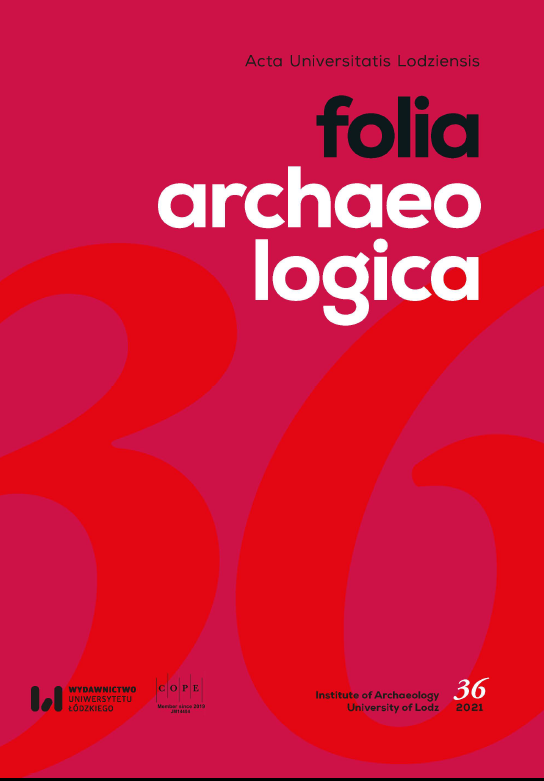Garnitury okuć rzemieni i inne elementy ozdobne wielkomorawskich mieczy
Sword-belt Sets and other Decorations of the Great Moravian Swords
Author(s): Zbigniew RobakSubject(s): Archaeology, Military history, Middle Ages
Published by: Wydawnictwo Uniwersytetu Łódzkiego
Keywords: Early Middle Ages; Carolingian culture; Great Moravia; sword; scabbard; strap fittings
Summary/Abstract: The paper discusses the appearance of the Great Moravian warriors’ swords and focuses on sets of strap and belt fittings used to fasten the swords. It also comments on other elements decorating sword scabbards used in Great Moravia in the 9th and at the beginning of the 10th century. The paper analyses the composition of the sword sets known from Great Moravia in the context of a wider typology and chronology of finds from European areas under the influence of the Carolingian culture between the beginning of the 9th century and the 1st half of the 10th century.An analysis of archaeological assemblages and loose finds of sword strap fittings from entire Europe (approx. 300 items) allows defining five basic types of Carolingian sword sets used in the late Carolingian times (beginning of the 9th century – 1st half of the 10th century) in the area under the Carolingian influences. Based on the analysis, it was also possible to determine the chronology and geographical scope of certain types of sword sets. Among the five identified types, four (I, II, IV, V) are known from the former Great Moravia territory. The only exception is type III, characteristic – so far – only for the north-western areas of the Carolingian Empire. The type I chronology covers the entire 9th century, while all other types are generally dated back to the 2nd half of the 9th century and the beginning of the 10th century. Detailed dating of finds can be clarified based on the ornamentation stylistics.In nearly every case, swords found in Great Moravian burials bear traces of wood suggesting that the weapons were deposited in scabbards. Based on the analysis, we were able to determine that scabbards were made of hardwood. Detailed analysis of certain finds revealed traces of fabrics and leather and, exceptionally, also fine metal elements such as small rivets or fragments of sheet metal. Commonly, scabbards were also strengthened with additional straps that also decorated the items. Those straps could have been embossed with decorative patterns.A scabbard chape from the Slovak Bojná-Valy hillfort is a unique find (Il. 8). The item was made of iron but its front side was plated with silver foil. Longer sides were inlaid with silver wire. So far, it is the only sword scabbard chape found in the Great Moravian context. The item has no contemporary analogies. It should be treated as an exceptional rarity, probably made at someone’s special request.Interestingly, in the Great Moravian context, there is no clear correlation between ornaments decorating pommels and cross-guards and the aesthetics of sets accompanying the swords – as if swords and fittings did not form a set. Moreover, swords with decorated pommels were usually not accompanied by sword sets but only by a strap-end. It seems that in Great Moravia sword sets were unpopular until the 2nd half of the 9th century when the swords with decorated pommels (types B/H and K) had been already outdated and types with undecorated pommels (type N/X and Y) became fashionable. Therefore, it seems that sword sets became popular among Great Moravian warriors in response to more modest sword decorations.
Journal: Acta Universitatis Lodziensis. Folia Archaeologica
- Issue Year: 2021
- Issue No: 36
- Page Range: 19-52
- Page Count: 34
- Language: Polish

